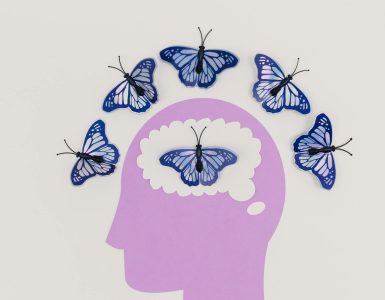We think we know ourselves. We believe our choices are rational, our feelings authentic, our actions deliberate. But the truth is, our minds are sneaky little creatures, riddled with biases, driven by hidden motivations, and guided by patterns we’re often completely unaware of. Psychology, the study of the mind and behavior, reveals a fascinating, often hilarious, and sometimes unsettling picture of what truly makes us tick.
The Illusion of Control: Why We Think We’re in Charge
One of the biggest secrets our minds keep is the illusion of control. We like to believe we’re the captains of our own ships, making conscious decisions that shape our lives. But numerous experiments show just how easily this illusion is shattered. Consider the “Lady Gaga effect”: studies have shown that people who believe they have chosen a product (even if the choice was subtly manipulated) are more likely to enjoy it and pay more for it. This isn’t about conscious deception; it’s about the power of believing you’re in control, a feeling so strong it can override objective reality.
Similarly, the “planning fallacy” demonstrates our tendency to underestimate how long tasks will take, regardless of past experience. We consistently overestimate our ability to complete projects on time, a phenomenon that plagues everyone from students cramming for exams to CEOs launching billion-dollar projects. This isn’t laziness; it’s a cognitive bias – a systematic error in thinking – that blinds us to the complexities of reality.
The Power of Priming: The Invisible Hand Guiding Our Choices
Have you ever noticed how easily your thoughts and actions can be subtly influenced? That’s the power of priming. Priming is the activation of certain associations in memory, often unconsciously, that influence our subsequent thoughts and behaviors. For instance, studies have shown that exposure to words related to age (like “Florida” or “wrinkle”) can slow down people’s walking speed. The mere activation of the concept of “old age” subtly influences their physical behavior!
Think about advertising. Many ads work through priming. A car commercial might feature a happy family driving along a scenic highway, subtly associating the car with positive feelings and family values. We’re not consciously thinking, “This ad is manipulating me,” but the association is planted in our subconscious, influencing our likelihood of buying the car.
The Chameleon Effect: Mirroring Our Social World
Humans are social animals, and our behavior is deeply influenced by those around us. The “chameleon effect” describes our unconscious tendency to mimic the postures, mannerisms, and even the speech patterns of people we interact with. This mirroring often happens without our awareness, fostering a sense of connection and rapport. Think about how you might unconsciously start fidgeting if someone else is fidgeting, or adopt a similar tone of voice when talking to someone. Quel est l'impact du langage corporel sur la communication ?
This effect has practical implications. Salespeople often use subtle mirroring techniques to build rapport with clients, increasing the likelihood of a successful sale. Similarly, politicians might unconsciously mirror the body language of their audience to build trust and connection.
The Bystander Effect: Why We Don’t Always Help
The bystander effect, a chilling demonstration of the influence of social context on behavior, shows that individuals are less likely to help someone in need when other people are present. The more bystanders there are, the less likely any one person is to intervene. This isn’t due to callousness; it’s a complex interplay of diffusion of responsibility (the feeling that someone else will take action) and social comparison (looking to others for cues on how to behave).
The tragic case of Kitty Genovese, where multiple witnesses failed to intervene during her murder, tragically highlighted the bystander effect. Subsequent research has shown this effect is pervasive, demonstrating how situational factors can override our inherent desire to help others.
Cognitive Dissonance: The Tension Between Beliefs and Actions
We strive for internal consistency. When our beliefs and actions clash, it creates cognitive dissonance – a state of psychological discomfort that motivates us to reduce the tension. This can lead to some surprising behaviors. For example, someone who smokes despite knowing it’s harmful might downplay the risks of smoking, rationalize their habit, or even become hostile towards those who criticize their behavior.
The Festinger and Carlsmith experiment famously demonstrated this. Participants who were paid only a dollar to lie about a boring task subsequently rated the task as more enjoyable than those paid twenty dollars. The smaller reward didn’t justify the lie, creating greater dissonance that they resolved by changing their attitude towards the task.
Conclusion: The Unpredictable Human
These are just a few glimpses into the complex and often surprising world of human behavior. Psychology reveals that we are not always the rational, self-aware beings we believe ourselves to be. Our actions are shaped by a constellation of unconscious biases, social influences, and cognitive shortcuts. Understanding these hidden patterns can help us make better decisions, navigate social interactions more effectively, and appreciate the fascinating, unpredictable nature of the human mind.
The journey into the secret lives of our minds is a journey of self-discovery, revealing the subtle forces that shape our thoughts, feelings, and actions. It’s a journey worth taking.

























Ajouter un commentaire